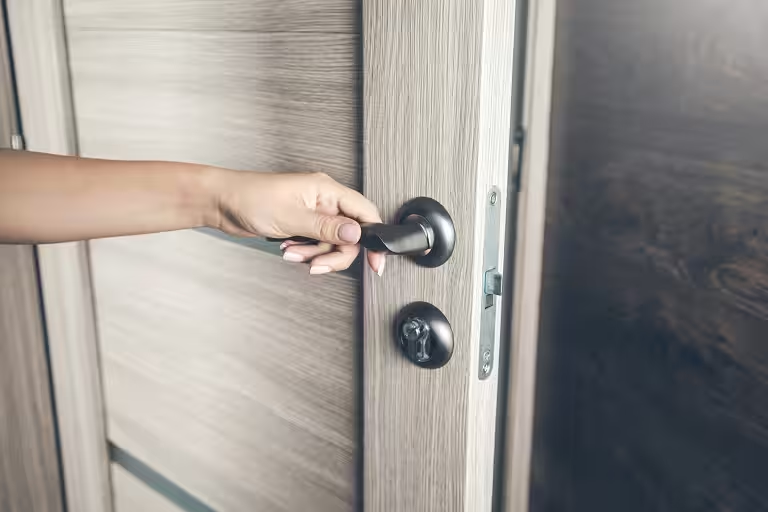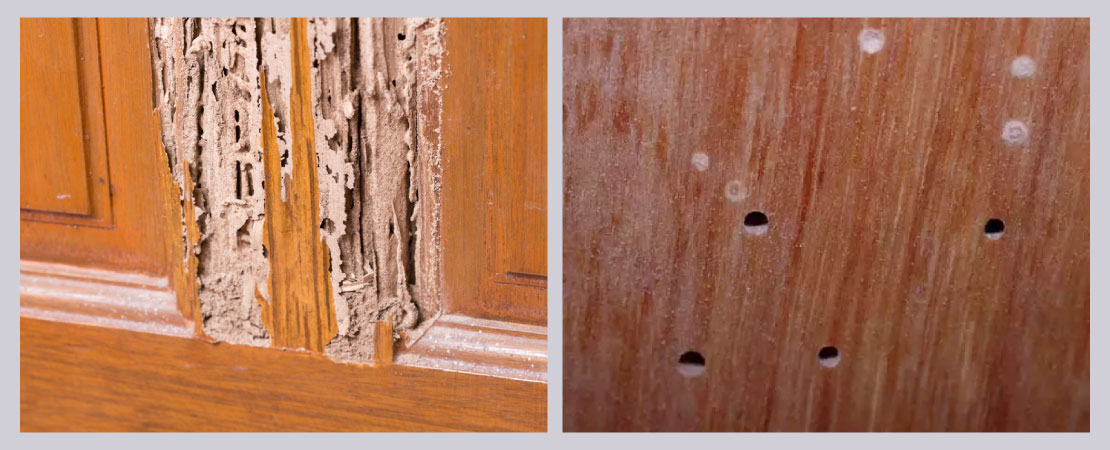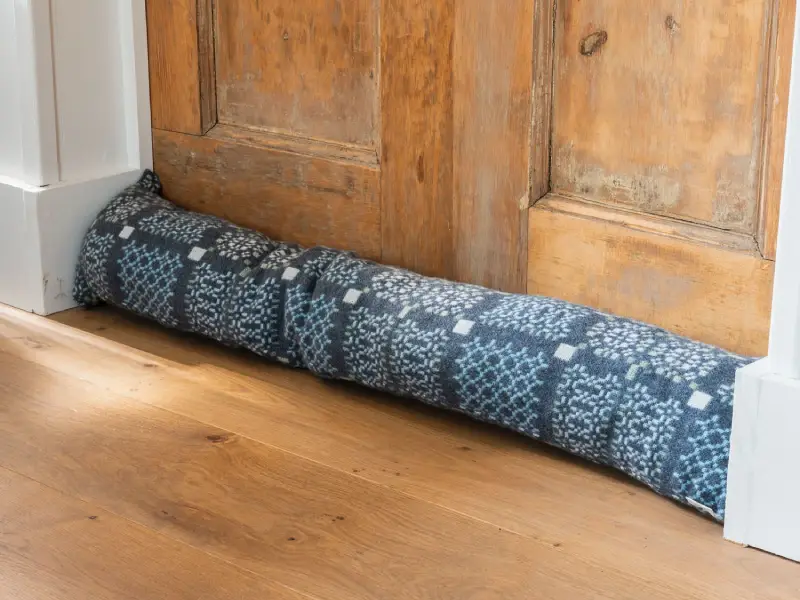Doors play a vital role in your home, providing security, insulation, and aesthetic appeal. Over time, however, they may show signs of wear and tear that compromise their functionality and look. Replacing your doors can enhance your home’s comfort, energy efficiency, and style. But how do you know when it’s time to replace them? Here are the key signs to watch for.
1) Difficulty Opening and Closing
One of the most common signs it’s time to replace your door is trouble opening or closing it. This could be due to:
- Warping or Swelling: Doors made of wood often warp or swell due to changes in humidity or temperature.
- Hinge Issues: Over time, hinges can loosen or rust, affecting the door’s movement.
- Structural Damage: Cracks or splits can prevent smooth operation.
If adjustments or repairs no longer solve the problem, it’s time to consider a replacement.

2) Visible Damage or Wear
A damaged door is not just an eyesore—it can also compromise safety and energy efficiency. Look for:
- Cracks or Splits: These weaken the door’s structure.
- Dents or Holes: Common in metal doors, these are signs of heavy wear.
- Peeling Paint or Finish: This can expose the material to the elements, leading to further damage.
Replacing a damaged door ensures better functionality and curb appeal.

3) Drafts Around the Door
Drafts are a telltale sign of an aging or poorly sealed door. Check for:
- Cold Air Seeping Through: This indicates gaps in the frame or worn weatherstripping.
- Light Passing Through Edges: If you can see light around the door edges, it’s not sealing properly.
Drafts not only reduce comfort but also increase heating and cooling costs. A new, energy-efficient door can solve this issue.
Quick Tip: Draft Excluders can help stop drafts

4. Increased Energy Bills
An old or inefficient door can significantly impact your energy bills. This happens when:
- The door lacks proper insulation.
- Air leaks allow conditioned air to escape.
- Heat or cold enters through single-pane glass in older door designs.
Modern doors are designed with energy efficiency in mind, using insulated cores and double or triple glazing to reduce energy consumption.
5. Outdated Style
Your door is one of the first things visitors notice about your home. If it looks outdated, it may no longer match your aesthetic. Signs your door needs a style upgrade include:
- Faded or peeling paint.
- A design that doesn’t align with modern trends.
- Visible age compared to the rest of your home’s exterior.
Replacing your door can instantly refresh your home’s look and boost its curb appeal.
6. Excessive Noise
If your door creaks, rattles, or makes excessive noise when used, it may have worn components or structural issues. A new door with high-quality materials and precision engineering can eliminate these annoyances.
7. Security Concerns
An aging or damaged door can compromise your home’s security. Warning signs include:
- Weak or Broken Locks: If your lock isn’t secure, your home is at risk.
- Hollow or Damaged Core: A hollow or damaged door is easier for intruders to breach.
- Rusty Hinges: These can weaken the door’s attachment to the frame.
Upgrading to a sturdy, modern door enhances safety and peace of mind.
8. Moisture Damage
Doors exposed to the elements are particularly vulnerable to moisture damage, especially wooden ones. Signs include:
- Rotting or Decaying Wood: This weakens the door’s structure and shortens its lifespan.
- Water Stains or Mold Growth: These indicate prolonged exposure to moisture.
Replacing the door with a weather-resistant option, such as fiberglass or steel, can prevent future issues.
9. Condensation Between Glass Panes
For doors with glass inserts, condensation between panes is a red flag. This means the seal is broken, and the door is no longer insulating effectively. Replacing the glass or the entire door can resolve this problem.
10. Increased Noise from Outside
If you hear more noise from outside than usual, it may be due to:
- A lack of insulation in your door.
- Gaps around the frame.
- Worn-out seals.
Modern doors with soundproofing materials can significantly reduce outside noise, creating a more peaceful indoor environment.
11. Rot or Pest Damage
Wooden doors are particularly susceptible to rot and pest infestations. Check for:
- Signs of Termites: Holes, sawdust, or hollow-sounding wood.
- Soft Spots: These indicate internal rot.
Replacing a damaged door with a pest-resistant material like steel or fiberglass is a smart long-term investment.
12. Structural Issues with the Frame
Sometimes the problem isn’t the door itself but the frame. Signs of trouble include:
- Warped or Rotten Frames: These prevent the door from closing properly.
- Loose or Shaky Frames: A poorly anchored frame affects the door’s functionality and security.
Replacing the frame along with the door ensures a perfect fit and improved performance.
13. Fading or Discoloratio
Constant exposure to sunlight or weather elements can fade or discolor your door over time. While some materials, like fiberglass, resist fading better, an overly weathered door may need replacement to restore its appearance.
14. You’re Preparing to Sell Your Home
Replacing your door can significantly boost your home’s resale value. Buyers appreciate the added energy efficiency, security, and aesthetic appeal of a new door. It’s an investment that often pays for itself by improving curb appeal and attracting more offers.
15. Persistent Maintenance Needs
If you’re constantly repairing your door or its components, it may be more cost-effective to replace it altogether. A new door requires less upkeep and offers better reliability.
Choosing the Right Replacement Door
When replacing your door, consider the following:
- Material: Choose from wood, steel, fiberglass, or composite, depending on your needs and budget.
- Style: Ensure the new door complements your home’s architecture.
- Energy Efficiency: Look for doors with ENERGY STAR ratings or thermal insulation.
- Security Features: Opt for doors with multi-point locking systems or reinforced cores.
Conclusion
Your doors are an essential part of your home’s functionality, security, and style. Recognizing the signs of wear and knowing when to replace them can save you money on repairs and energy bills while enhancing your home’s overall appeal. Whether you’re dealing with drafts, visible damage, or outdated designs, upgrading to a modern, efficient door is a decision you won’t regret.
FAQs
- How long do doors typically last?
Most doors last 20–30 years, depending on material and maintenance. - What’s the best material for an exterior door?
Fiberglass and steel are durable, low-maintenance options, while wood offers classic aesthetics but requires more care. - Can I replace a door without replacing the frame?
Yes, but only if the frame is in good condition. If it’s damaged, it’s best to replace both for a proper fit. - How can I make my door more energy-efficient?
Replace old weatherstripping, add a storm door, or upgrade to an insulated door with double-glazed glass. - What’s the average cost of replacing a door?
Costs vary based on material and design, ranging from £200 for basic models to over £1,000 for premium options with installation.

